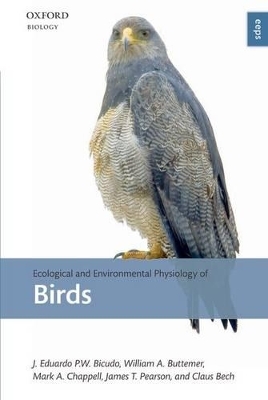
Ecological and Environmental Physiology of Birds
Oxford University Press (Verlag)
978-0-19-922845-4 (ISBN)
Birds have colonized almost every terrestrial habitat on the planet - from the poles to the tropics, and from deserts to high mountain tops. Ecological and Environmental Physiology of Birds focuses on our current understanding of the unique physiological characteristics of birds that are of particular interest to ornithologists, but also have a wider biological relevance. An introductory chapter covers the basic avian body plan and their still-enigmatic evolutionary history. The focus then shifts to a consideration of the essential components of that most fundamental of avian attributes: the ability to fly. The emphasis here is on feather evolution and development, flight energetics and aerodynamics, migration, and as a counterpoint, the curious secondary evolution of flightlessness that has occurred in several lineages. This sets the stage for subsequent chapters, which present specific physiological topics within a strongly ecological and environmental framework. These include gas exchange, thermal and osmotic balance, 'classical' life history parameters (male and female reproductive costs, parental care and investment in offspring, and fecundity versus longevity tradeoffs), feeding and digestive physiology, adaptations to challenging environments (high altitude, deserts, marine habitats, cold), and neural specializations (notably those important in foraging, long-distance navigation, and song production). Throughout the book classical studies are integrated with the latest research findings. Numerous important and intriguing questions await further work, and the book concludes with a discussion of methods (emphasizing cutting-edge technology), approaches, and future research directions.
The contributors to this book are a diverse group of professional biologists from across the globe, each with their own particular specialized training and expertise. Each is thoroughly versed in the rigorous, disciplined, and objective methods of science and has used them to build a career, in whole or in part, probing physiological questions and adding to our understanding of how avian biology 'works' at a mechanistic level.
1. Introduction - Blueprint of a Bird (Bauplan/Body plan) ; 2. General Physiological Principles ; 3. Physiological Bases of Fecundity/Longevity Tradeoffs ; 4. Adaptations: Obtaining and Processing Food ; 5. Adaptations: Living in Specific Environments ; 6. Adaptations: Neural and Sensory ; 7. Adaptations: Developmental Physiology ; 8. Approaches and Techniques ; 9. Conclusions and Future Directions ; References ; Index
| Erscheint lt. Verlag | 1.4.2010 |
|---|---|
| Reihe/Serie | Ecological and Environmental Physiology Series (eeps) | Oxford Biology |
| Zusatzinfo | 60 illustrations |
| Verlagsort | Oxford |
| Sprache | englisch |
| Maße | 154 x 234 mm |
| Gewicht | 523 g |
| Themenwelt | Medizin / Pharmazie ► Medizinische Fachgebiete ► Arbeits- / Sozial- / Umweltmedizin |
| Naturwissenschaften ► Biologie ► Zoologie | |
| ISBN-10 | 0-19-922845-0 / 0199228450 |
| ISBN-13 | 978-0-19-922845-4 / 9780199228454 |
| Zustand | Neuware |
| Haben Sie eine Frage zum Produkt? |
aus dem Bereich


